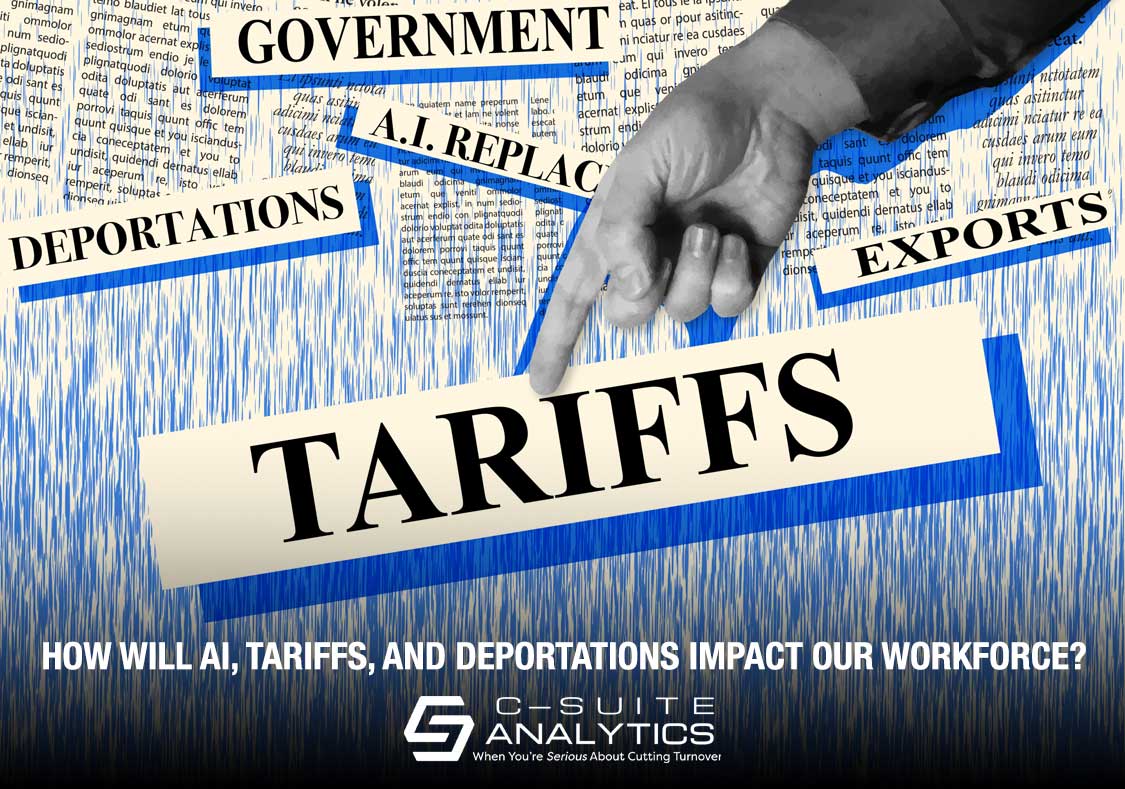AI, deportations, tariffs, and birthrate declines are reshaping America's workforce—blue- and white-collar alike. From baby boomer exits to AI disruptions, breaking down the workforce challenges no leader can afford to ignore.
Wall Street Journal Report Sabotages Employee Retention Accountability

Do You Agree That the Key to Employee Retention is Trust?
Let’s start with whether you agree that the #1 reason employees stay or leave is how much they trust their first-line supervisors. Here is a pile of evidence:
- MIT’s recently-released study on The Great Resignation said the #1 cause of employees’ quitting is “toxic corporate culture”, reinforcing Gallup’s findings over the last decade that supervisors drive the corporate culture from the bottom up.
- That same MIT study indicated pay was the 16th reason why employees are quitting.
- And I detailed 25 studies in my book HR’s Greatest Challenge that reached the same conclusion.
And perhaps most convincing is our clients who have consistently cut turnover by 20% and more, where we have trained their first-line leaders to conduct Stay Interviews and then hold those leaders accountable for achieving retention goals. And “first-line leaders” by the way includes all leaders, top to bottom.
Employee Retention is Built on Trust Not New Programs
Now comes a fascinating article in the Wall Street Journal that reports how several major corporations are employing Chief Happiness Officers, beginning by saying “It’s a job title that prompts smirks and questions”, followed by “If you’re wondering what the heck a CHO does all day, or imagining a gig that’s all about smiling, then you’re partly right”.[i]
Gosh, this new job already has its own C-title. This paragraph actually appears in the article:
The position isn’t entirely new, but it hasn’t always been seen as legit, either. In one of the first notable uses, McDonald’s Corp. “promoted’ Ronald McDonald to chief happiness officer in 2003 as a joke, and the label can still carry a whiff of french friend and clownishness.
Another part of the article references a CHO who is wearing a T-shirt that says “Smiles are contagious. Be a carrier”.
Here’s the problem. Every time you invent a new program to improve retention, you divert, you water down, the accountability each leader must have for retaining her team.
To be clear, saying the #1 reason employees stay or leave…or for that matter engage or disengage…does not mean that every employee who quits distrusts her manager. But it does mean that those first-line supervisors are your very best solution for improving employee retention and engagement.
An Exercise in Assessing Your Employee Retention “Solutions”
Here’s an exercise to make this point. Let’s agree that first-line leaders score a 10 out of 10 on their power to improve employee retention. What score, then, would you give to the following seven other “solutions” you currently provide?
- Pay, starting with the most-acclaimed one. How much do your employees stay for the money you pay them relative to the same or more amount they can make elsewhere? Your 1-10 score is ___.
- Benefits, again relative to the same or better benefits they can get elsewhere. What makes your benefits program so strong that your employees choose your slate of benefits over other companies’ where they can get a job today if they choose? Your 1-10 score is ___.
- Recognition programs like employee of the month, special parking spaces, or service awards like company clocks or backpacks with your company logo, your 1-10 score is ___.
- Communication programs like CEO videos, town hall meetings, our pumping up the company intranet, your 1-10 score is ___.
- Onboarding, noted here as an often-believed to be critical part of retention, your 1-10 score on onboarding’s importance for reducing turnover is ___.
- Career ladders & job postings, following the belief that the availability of careers drives retention, your 1-10 score is ___.
- Engagement surveys and exit surveys, both of which usually drive company-wide, one-size-fits-all programs as though first-line leaders have little impact on retention, your 1-10 score is ___.
You get the idea. Believing hiring a Chief Happiness Officer will improve turnover…or relying on the seven ideas noted above…completely skirts around science. And that science says the #1 reason employees stay or leave is how much they trust their supervisor.
Don’t Expect the Latest Trend to Improve Employee Retention
So the lesson is not to stop doing the seven ideas listed above. Just lower your expectations they will lead to improved employee retention because they won’t. Put your energy, time, and mindfulness to improving first-line leaders’ skills at building trust, one-on-one with each employee, instead.
Stay Interviews Build Trust Which is Key to Improving Employee Retention
Schedule a conversation with me at DFinnegan@C-SuiteAnalytics.com to discuss your employee retention roadblocks and I’ll share ideas for how you can move forward and what is working for other companies to cut turnover by 20% and more, even during The Great Resignation that may benefit you.
[i] https://www.wsj.com/articles/confessions-of-your-companys-chief-happiness-officer-11652303222



